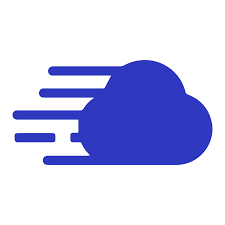Quality Assurance
& Software Testing Services
At Eastlancers, we ensure your software delivers flawless performance, strong reliability, and a seamless user experience. Our QA specialists apply modern testing tools and industry best practices to validate every aspect of your application, including functionality, security, compliance, and usability across all stages of development.
OUR Services
Quality Assurance and Software Testing Services By Eastlancers
Delivering bug-free software is core to our development process. Every service we offer follows a rigorous quality protocol to ensure your application is error-free at launch.
Testing on Real Devices
We test your app on 100+ real devices across various brands and screen sizes to ensure performance, responsiveness, and compatibility across all form factors.
Functional Tests
Our team conducts comprehensive end-to-end testing, covering user flows, alerts, emails, SMS, notifications, and third-party API or system integrations.
Business Testing
We provide post-launch analysis, monitor live issues, analyze competitor apps, and offer debugging support to align your app with business goals.
Design Checks
We ensure your app delivers a consistent and accessible user experience by performing A/B testing, accessibility reviews, and key usability validations.
Compatibility Testing
Our team tests your app across various devices, screen sizes, processors, RAM levels, and OS versions to ensure smooth and reliable performance.
App Store Optimization
We enhance your app’s visibility and downloads by optimizing descriptions, visuals, and metadata to align with app store guidelines and search trends.
Installation Optimization
We validate the uninstall/reinstall process, ensure seamless sync between updated and non-updated versions, and perform post-update functionality checks.
User Interaction Checks
We review user interactions for UI/UX quality, testing usability elements like gestures, ergonomics, screen transitions, and visual responsiveness.
Performance Evaluation
We assess app performance using API-level functional stability tests, regression automation, and API benchmarking for speed and reliability.
Security Testing
We identify vulnerabilities such as data leaks and weak Transport Layer Security, while also conducting detailed log analysis to ensure protection.
Tech Stack
Tech Stacks and Tools We Use















Start Building Your Quality Assurance & Software Testing App Today
Book a free discovery session.
Get Quote
Testimonials
Leading global companies trust us to develop tailored solutions for their business. We always go beyond expectations and deliver a 5-star-worthy experience.
TECH PARTNERS
Tech Partnerships Built on Trust





Book A Free
Discovery Call
Let our team understand your business needs, showcase our expertise, and provide a roadmap for turning your idea into reality. We prioritize your privacy and adhere to a strict NDA policy, ensuring your information is secure.
TRUSTED BY
FAQs
Learn More About our QA Testing Services
The scope and complexity of your project play a major role in determining the effort required for quality assurance (QA) and software testing services. Factors such as the type and depth of testing needed, the required skill level, and the overall size of the application all influence the approach.
QA services may be structured around different engagement models depending on your needs, including dedicated testing teams, milestone-based testing, or full project-based QA cycles.
While cost is an important factor, it shouldn’t be the only consideration. The quality of testing, the expertise of the team, and the service provider’s track record are all critical to the success of your application.
To get a precise estimate tailored to your project, we encourage you to contact us directly. Our team at Eastlancers will guide you through the best approach for your goals and timeline.
Software testing and quality assurance are essential components of delivering a flawless product.
Integrating both processes throughout every stage of the Software Development Life Cycle (SDLC) helps ensure stability, performance, and reliability. Testing typically follows the final development phase and is conducted before deployment to validate all updates and new features.
Software testing involves evaluating software applications or systems to identify bugs, performance issues, or usability challenges. It ensures the product meets predefined requirements and functions as intended.
Quality assurance (QA) is a broader process that encompasses software testing, quality control, planning, and continuous improvement. While testing focuses on identifying defects in the product, QA ensures the overall development process meets consistent quality standards.
In essence, software testing is a crucial component of QA. Together, they work to deliver a high-quality, reliable, and user-friendly software product by detecting issues early and maintaining adherence to performance and usability benchmarks.
Hiring a QA software testing company can offer significant value to a growing business. By ensuring higher product quality through early bug detection and optimized performance, businesses can reduce costly post-deployment issues. This leads to greater user satisfaction, improved feature reliability, and a stronger, more loyal customer base.
Quality Assurance (QA) is a proactive process focused on preventing defects by establishing procedures, standards, and best practices throughout the development lifecycle.
Quality Control (QC), on the other hand, is a reactive process that involves inspecting and testing products to ensure they meet defined quality standards.
Both QA and QC play crucial roles in delivering high-quality software—QA works to avoid issues from the start, while QC ensures the final product is error-free and reliable.
The duration of software testing depends on several factors, including the size and complexity of the project, the type and scope of testing required, the experience of the QA team, and the available resources.
Testing is not a one-time task—it’s an ongoing process that begins early in the development cycle and continues until the final release. Depending on the project, the testing phase can last from a few weeks to several months or more.
Faster cycles like unit testing and integration testing are usually completed earlier, while more comprehensive stages like system testing and user acceptance testing take additional time. In many cases, testing is iterative and involves multiple rounds to fully validate the software.
To ensure quality without delaying timelines, testing should be planned and integrated into the development process from the start. This helps detect and fix defects early, reduce overall project risk, and improve cost-efficiency.
The time taken to test software depends on aspects such as project scope, testing requirements, testing team, testing environment tools, and project timeline. Acknowledging these aspects can help teams organize and execute procedures effectively, enabling the building of software that stays within budget constraints and project timelines.
Outsourcing quality assurance (QA) and software testing services offers several strategic advantages for businesses:
- Access to Specialized Expertise : Outsourcing provides access to skilled QA professionals with deep domain knowledge and technical expertise that may not exist in-house. This leads to improved software quality and overall performance.
- Cost Savings : By eliminating the need to recruit, train, and maintain a full-time QA team, businesses can significantly reduce costs. Outsourcing also allows access to top-tier resources at a more affordable rate.
- Reduced Risk : A dedicated QA partner conducts thorough and structured testing, minimizing the risk of bugs and defects. This ensures better product stability and lowers post-deployment maintenance costs.
- Flexibility and Scalability : Outsourcing offers the flexibility to scale QA efforts up or down depending on project demands. This is especially beneficial for companies with fluctuating workloads or evolving product requirements.

